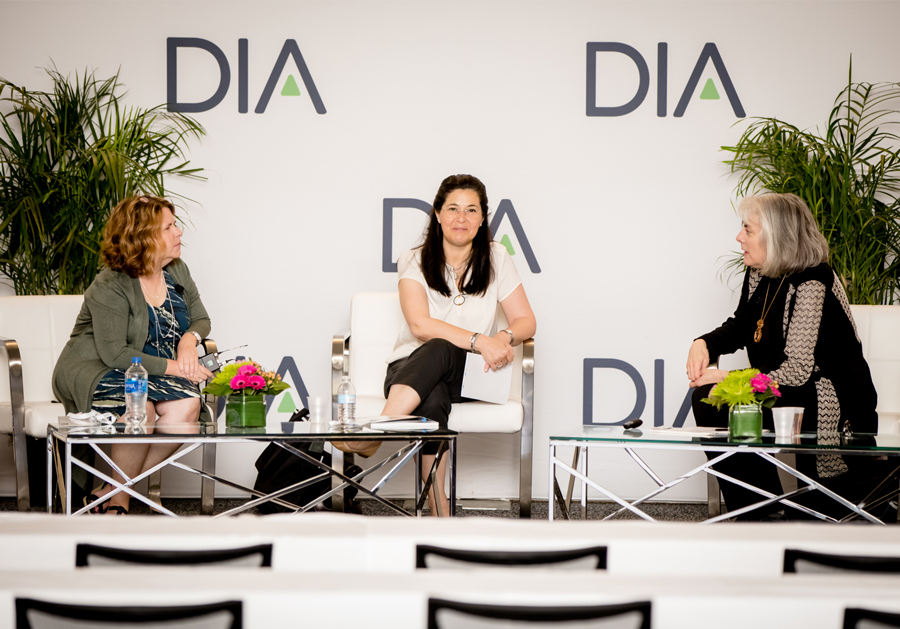Proceedings: DIA 2018 Global Annual Meeting

New Ways to Incorporate Patient Engagement into Drug Development and Healthcare Delivery
Deborah Collyar
President, Patient Advocates In Research (PAIR)
ore than 20 sessions at the DIA 2018 Global Annual Meeting in Boston focused on patient engagement or the patient perspective. Two sessions, in particular, covered traditional areas that are not normally included in discussions about how to incorporate patient voices into operations: “A Hot Debate: Perspectives on Benefit and Risk from Patients Across Diseases” and “Patient Engagement in Pharmacovigilance.”
Key Takeaways
Patient-focused benefit/risk communication:
- Trust must be established before any information about managing risk will have an impact with patients and their providers.
- Communication strategies must keep pace with constantly changing environments and concerns, and take real patient issues into account.
- There are patient-focused regulatory tools from both EMA and FDA, as well as an international patient preference model, that trial sponsors can use to learn directly from patients.
Patient-focused pharmacovigilance efforts:
- Use Health Literacy (HL) principles for all patient materials to ensure safety information is accurate, accessible, and actionable.
- Use communication models that incorporate and combine multiple evidence-based fields together for better patient outcomes.
- Real World Data and Public Hearings complement regulatory efforts to review safety data.
Alberto Grignolo and Lode Dewulf discuss new ways to incorporate patient engagement into drug development.
Session Panelists
A Hot Debate: Perspectives on Benefit and Risk From Patients Across Diseases:
Deborah Collyar (Moderator and Speaker), President, Patient Advocates In Research (PAIR)
Dinah Duarte, Scientific Evaluation Unit, Directorate of Medicinal Products, INFARMED
Rebecca (Becky) Noel, Global Benefit-Risk Lead, Global Patient Safety, Eli Lilly and Company
Patient Engagement in Pharmacovigilance:
David Blaser, Director, Health Informatics, PatientsLikeMe
Deborah Collyar (Moderator), President, Patient Advocates In Research (PAIR)
Emily Freeman, Director, Patient Centered Outcomes, AbbVie, Inc.
Shelley Gandhi, Strategic Advisor, NDA Group
Meredith Smith, Global Risk Management Officer, Global Patient Safety, Amgen Inc.
“A Hot Debate: Perspectives on Benefit and Risk from Patients Across Diseases” explored how regulators, patients, and companies can work together to discuss the benefits and risks of emerging products and lead to better patient outcomes that actually matter to patients. This means that health literacy (HL) principles must create a foundation for communication strategies, and patient preferences must be sought and used to ensure an impact.
Dinah Duarte explained how the Portuguese Regulatory Authority(INFARMED), has incorporated patient preference information into their traditional benefit/risk assessment process. Rebecca Noel, Eli Lilly’s Global Benefit-Risk Lead, presented the Innovative Medicines Initiative’s (IMI) PREFER model, which advocates for methods to gather patient preferences. She shared insights from two diverse medical conditions that highlighted how different each disease can be, along with its treatments, patient situations, and opportunities that sponsors can capitalize on as they develop patient communication strategies.

Left to right: Rebecca (Becky) Noel, Dinah Duarte, Deborah Collyar
“Patient Engagement in Pharmacovigilance” presented current research and emerging best practices in patient risk communication, and methods for collecting patient input in the design of communication materials. The goal was to help trial sponsors develop understandable and actionable risk communication tools that utilize patient-generated real world safety data, public hearings, and patient input. Why? To help patients in their decision making process as they decide whether to take a specific medicine. After all, this is the principal purpose of pharmacovigilance.
Meredith Smith (Amgen) reminded us that Risk Evaluation and Mitigation Strategy (REMS) patient materials exist not just to sell products but to truly inform patients so they can take actions that will benefit their health. Emily Freeman (AbbVie) presented the Risk Interventions and Strategic Communications (RISC) model that incorporates Health Literacy, Shared Decision Making, and Quality Improvement steps to create better patient outcomes. David Blaser (PatientsLikeMe) shared a patient-generated Real World Data (RWD) example that complemented more traditional data sources as FDA assessed safety issues of a new agent. Shelley Gandhi (NDA Group) explained how new EU Public Hearings can empower patients and add value to the drug evaluation process by collecting public comments (with guidance) as part of a safety review.
Attendees were encouraged to:
- Get involved with collaborative and international efforts.
- Use the resources presented to learn more.
- Get expertise to incorporate Health Literacy principles.
- Talk with colleagues about bringing these concepts into work flows.
These sessions clearly showed that patient engagement can be incorporated into all facets of drug development and healthcare delivery. For more information, contact Deborah Collyar at deborah@tumortime.com.

